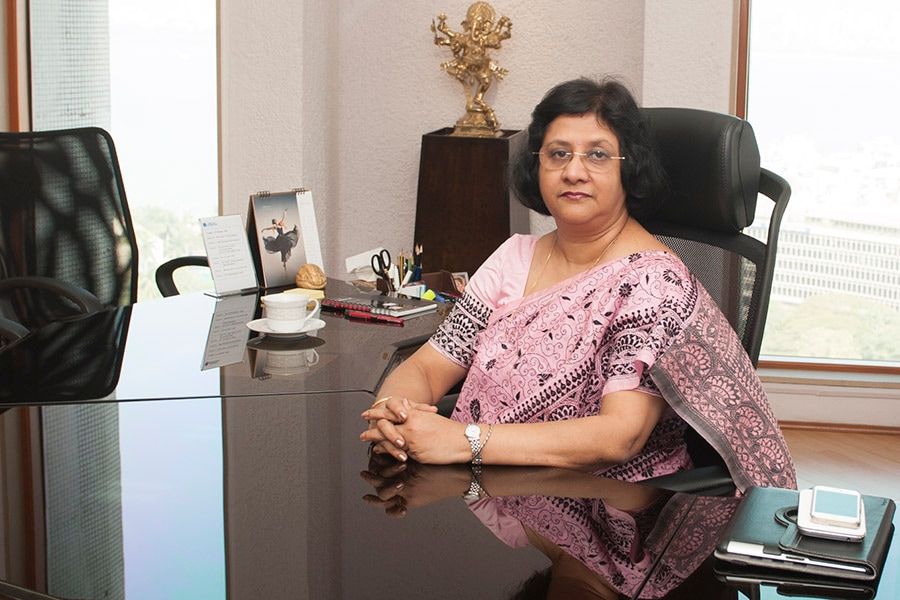Unified SBI gets more muscle as merger with associates takes shape
Bank will embark to strengthen digitalisation further over the next 15 months


 Image: Vikas Khot
Image: Vikas Khot
The State Bank of India (SBI) on Monday opened for trading at the stock markets as one single bank, post the merger of five associate banks and Bharatiya Mahila Bank (BMB) with itself. The associate banks which merged with SBI are State Bank of Patiala, State Bank of Bikaner and Jaipur, State Bank Of Hyderabad, State Bank of Mysore and State Bank of Travancore.
The total customer base of the bank will reach 37 crore, with a branch network of around 24,013 and 270,111 staff across the country. The merged entity, as on December 31, 2016, has deposits of above Rs 26 lakh crore and advances of Rs 18.77 lakh crore, officials said. The merged SBI entity now has over 500 million customers and 740 million accounts.
“Over the past 48 hours, SBI has completed a mass mission in the banking sector. No bank has ever accomplished a six-way merger of such magnitude, involving 500 terabytes of data,” SBI’s chairman Arundhati Bhattacharya told the media on Monday. She said the treasury and dealing rooms of all the six banks have been seamlessly integrated and are “working as one”.
SBI stocks rose by as much as 1 percent to an intraday high of Rs 295.50 at the BSE trade.
SBI, on April 1, unveiled a new logo, to signal the merger. The background to the SBI “keyhole” has been changed from white to a navy blue and the new logo is of a different font and a few shades lighter than the existing blue colour.
With the merger taking shape, SBI will now be in a position to focus on a key area of growth, relating to digitisation and enhancing customer relationships. “By July 2018, you will see a more globalised and complete SBI,” she said.
Bhattacharya also spelt out details relating to transfer requests and VRS which some of the staff have applied for during the merger process. With this merger, five local head offices will go away. Bhattacharya said at least 1,800 relocations could take place over the next 24 months. She highlighted that the region of Ahmedabad, Bhopal and the Northeastern region were areas which showed a scarcity of SBI staff and required deployment.
Another 2,800 people’s application would be considered for VRS and, if applicable, will be carried out.
The SBI chief played down the problem of stressed assets post-merger, stating that nearly 8,000 crore of additional provisioning to deal with stressed assets will be in place. “The numbers may look large, but there will be a better ability to resolve the problems,” she said.
The “granular-data” merger of each bank is currently on and the entire exercise will be complete by May 27, Bhattacharya said.
First Published: Apr 03, 2017, 12:46
Subscribe Now